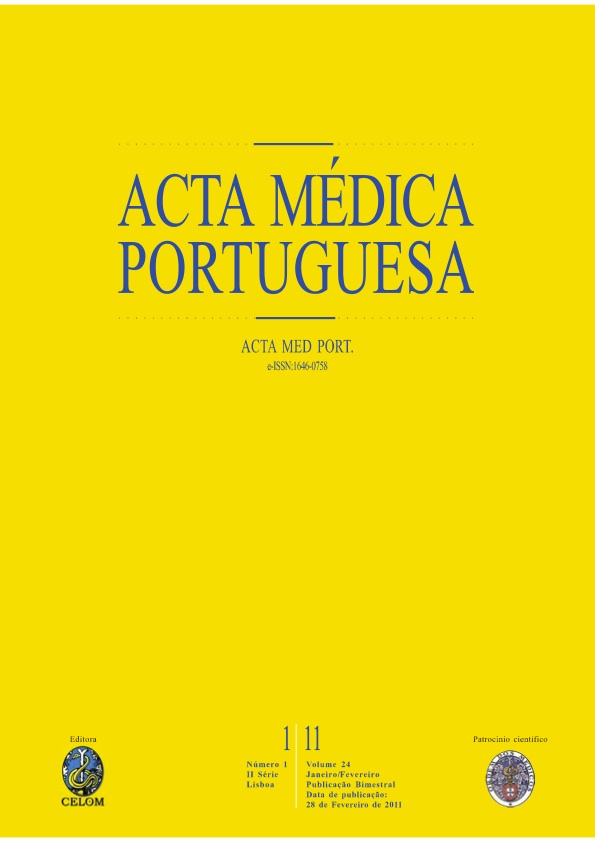Cerebral venous thrombosis: retrospective analysis of 49 cases.
DOI:
https://doi.org/10.20344/amp.347Abstract
Cerebral Venous Thrombosis (CVT) is a rare and potentially life-threatening disease, accounting for about 0.5% of stroke cases. However, it is believed to be an underdiagnosed condition. Early diagnosis requires a high degree of suspicion and appropriate use of imaging modalities.Imagiological and clinical characterization of CVT cases diagnosed at our hospital from 2004 to 2007.This study was a retrospective, cross-sectional analysis from 2004 to 2007, using our institution database. We reviewed hospital discharge data to assess the incidence of CVT. The study population consisted of 49 patients. Retrospective review of the clinical data and imaging studies of these patients was then performed.Of the 49 patients with confirmed CVT, 38 were female. Patient age varied between 16 and 75 years, with an average of 42.6 years. Thrombotic risk factors were found in 43 patients; the most frequent was dyslipidemia (n = 22) followed by oral contraceptive use (n = 18). Initial head Computerized Tomography (CT) was normal in six cases. Diagnosis was made by Magnetic Resonance (MR) in 38 cases, Cerebral CT-Venography in 10 cases and Digital Subtraction Angiography in one case. Average time from onset of symptoms to diagnosis was nine days; this was not significantly different when comparing the group diagnosed by MR with the group diagnosed by CT-Venography. Right transverse sinus was the most frequent location of thrombosis (n = 36). Only in four cases thrombosis did not involve the lateral sinuses.Lateral sinus thrombosis is a frequent variety of CVT, accounting for 91.8% of our cases. A negative Head CT scan does not exclude the presence of cerebral venous thrombosis; therefore appropriate imaging study should be performed whenever there's a high degree of clinical suspicion. Cerebral CT-Venography seems to be a good alternative to MR for the diagnosis of CVT.Downloads
Downloads
Published
How to Cite
Issue
Section
License
All the articles published in the AMP are open access and comply with the requirements of funding agencies or academic institutions. The AMP is governed by the terms of the Creative Commons ‘Attribution – Non-Commercial Use - (CC-BY-NC)’ license, regarding the use by third parties.
It is the author’s responsibility to obtain approval for the reproduction of figures, tables, etc. from other publications.
Upon acceptance of an article for publication, the authors will be asked to complete the ICMJE “Copyright Liability and Copyright Sharing Statement “(http://www.actamedicaportuguesa.com/info/AMP-NormasPublicacao.pdf) and the “Declaration of Potential Conflicts of Interest” (http:// www.icmje.org/conflicts-of-interest). An e-mail will be sent to the corresponding author to acknowledge receipt of the manuscript.
After publication, the authors are authorised to make their articles available in repositories of their institutions of origin, as long as they always mention where they were published and according to the Creative Commons license.









